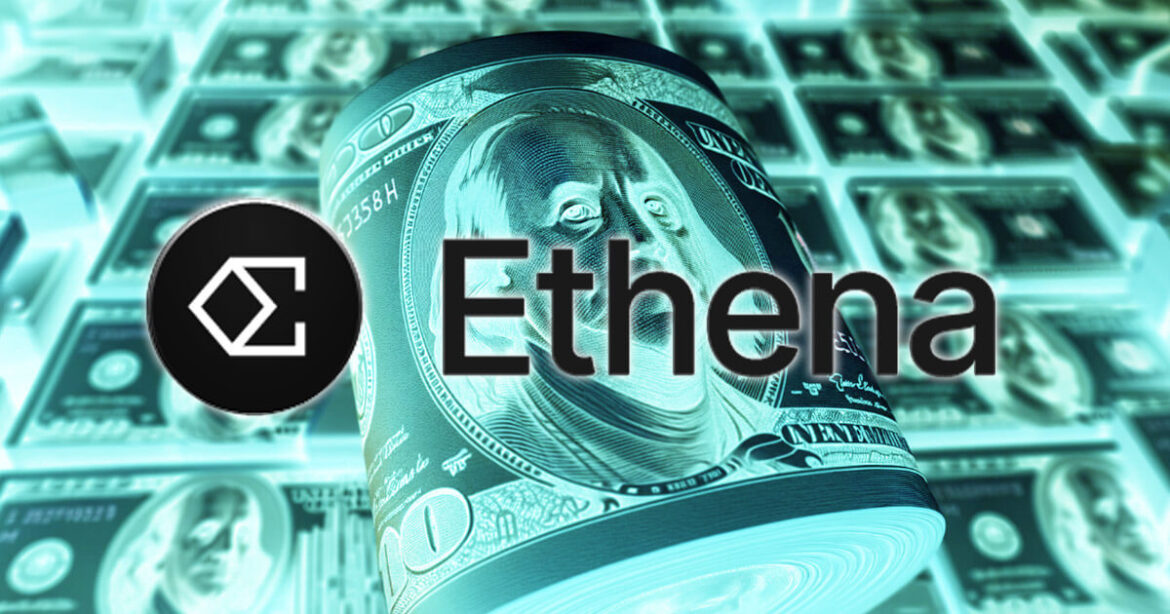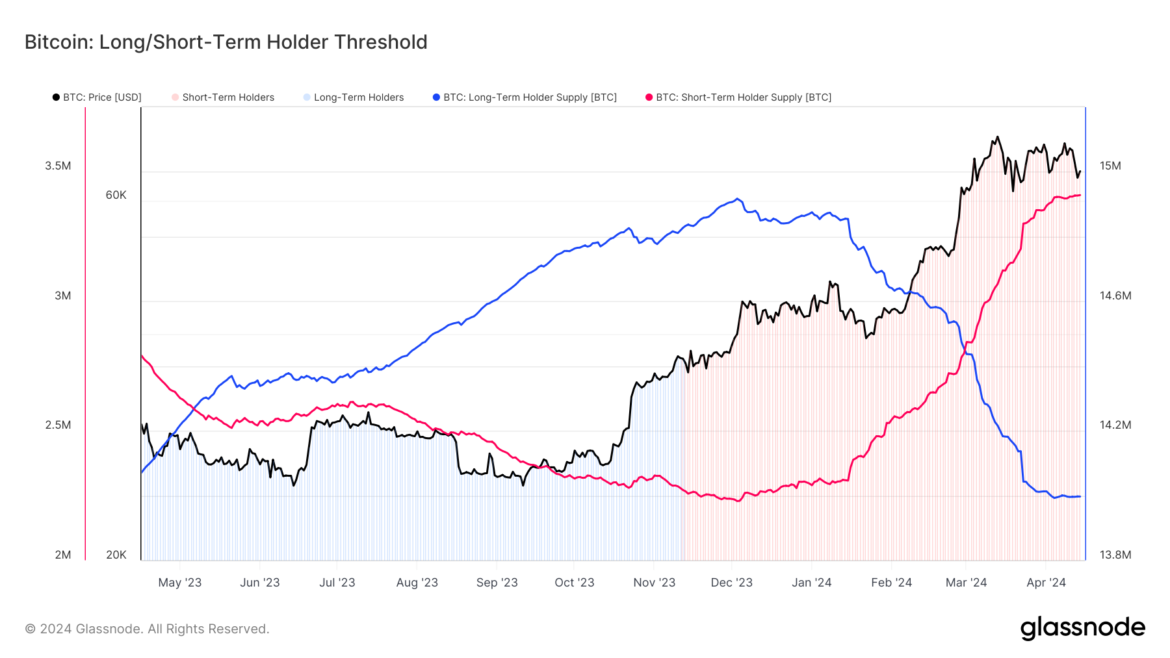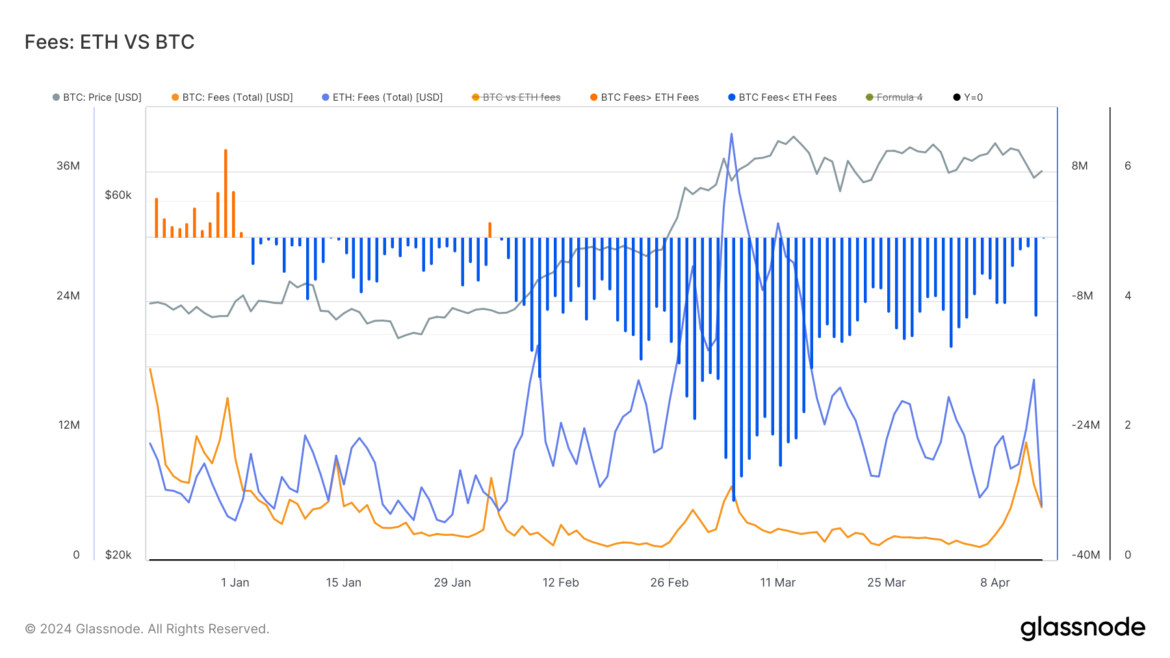 Popular onchain analyst Willy Woo has predicted a potential bitcoin price surge to $650,000 at the bull market’s peak. His prediction hinges on spot bitcoin exchange-traded fund (ETF) investors fully deploying their assets based on recommendations from asset managers. “These are very conservative numbers. Bitcoin will beat gold cap when ETFs have completed their role,” […]
Popular onchain analyst Willy Woo has predicted a potential bitcoin price surge to $650,000 at the bull market’s peak. His prediction hinges on spot bitcoin exchange-traded fund (ETF) investors fully deploying their assets based on recommendations from asset managers. “These are very conservative numbers. Bitcoin will beat gold cap when ETFs have completed their role,” […]
Source link
CoinNews
USDe maintains full collateralization amid first market ‘stress test’
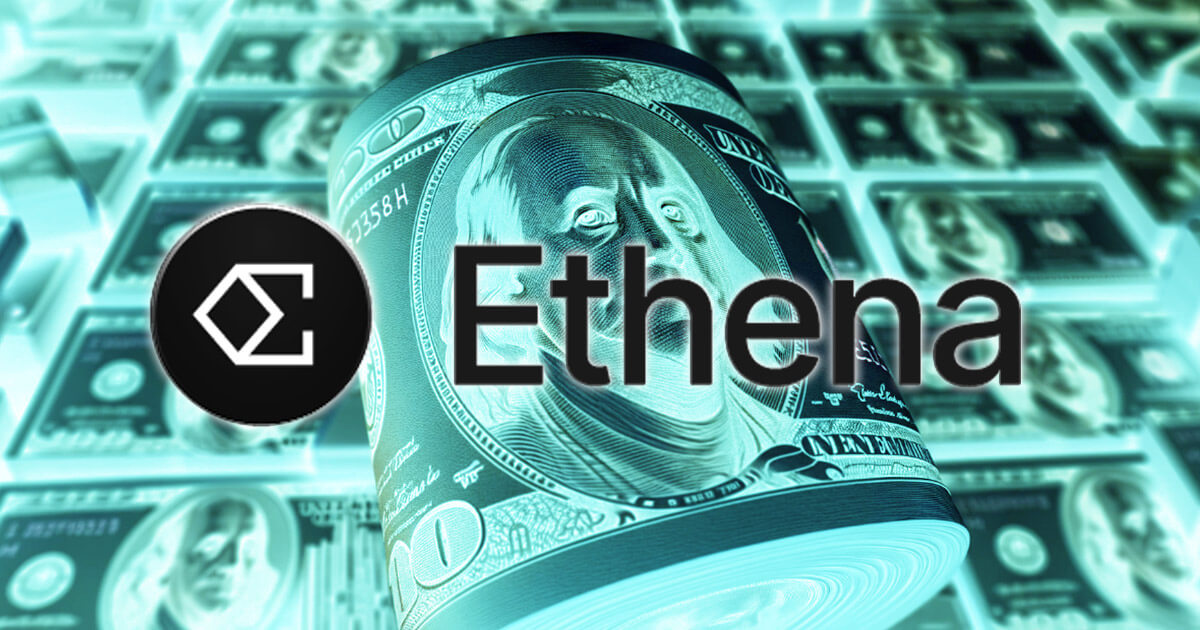
Ethena Labs, the entity behind the USDe synthetic dollar, has released the asset’s first attestation report, which shows the stablecoin remained fully collateralized over the past week despite significant turbulence in the crypto market.
The report follows a brief depegging incident during a market-wide downturn during the weekend.
Attestation report
As of April 15, the current supply of USDe stands at $2.358 billion. The aggregate value of assets, comprising Bitcoin, Ethereum, liquid-staked Ethereum, and Tether’s USDT stablecoin, securing the issued tokens totals $2.365 billion, reflecting an excess reserve of $32.7 million.
Three distinct custodians hold these assets. Copper manages $1.279 billion, Ceffu oversees $1.066 billion, and Cobo handles $4.871 million. All assets backing USDe are securely stored off-exchange within institutional-grade custodial solutions.
Furthermore, $15.65 million is in the Ethena mint/redeem contract, while $32.7 million is in the reserve fund address.
The protocol said the attestation report represents its efforts towards enhanced transparency and has committed to delivering monthly updates to the public.
Stress test
The release of the attestation report comes after USDe experienced a brief depegging event during the weekend amid heavy market volatility triggered by Iran’s attack on Israel.
On April 13, USDe’s value plummeted to as low as $0.995 before reclaiming the $1 peg as market conditions improved.
Seraphim Czecker, Ethena’s head of growth, lauded USDe’s resilience during this market turbulence, describing it as passing its inaugural stress test.
However, dissenting voices argue otherwise, asserting that the crypto market’s inherent volatility renders the recent price dip as commonplace. Consequently, they suggest the protocol could face heightened risk should the market experience more significant declines.
Eric Forgy, the founder of crypto firm CavalRe, said:
“That wasn’t a stress test. By crypto standards, that was a typical afternoon. Let’s see what happens when ETH has a 40+% daily move.”
Mentioned in this article
Latest Alpha Market Report
Amid a Week of Severe Crypto Lows, TON and ONDO Record Gains Despite Broad Market Declines
 The past week has not been favorable for the majority of cryptocurrency assets, with only four specific digital currencies recording gains. This week, ONDO appreciated by 13.2%, TON increased by 11.3%, PENDLE grew by 6%, and LEO saw a slight uptick of 0.5%. Market Update: A Tough Week for Crypto With Few Standouts The landscape […]
The past week has not been favorable for the majority of cryptocurrency assets, with only four specific digital currencies recording gains. This week, ONDO appreciated by 13.2%, TON increased by 11.3%, PENDLE grew by 6%, and LEO saw a slight uptick of 0.5%. Market Update: A Tough Week for Crypto With Few Standouts The landscape […]
Source link
Quick Take
Long-term holders (LTHs) are defined by Glassnode as investors holding Bitcoin (BTC) for 155 days or more. Renowned for their astute investment strategies, LTHs typically accumulate BTC during bear markets and sell during bull runs to generate profits.
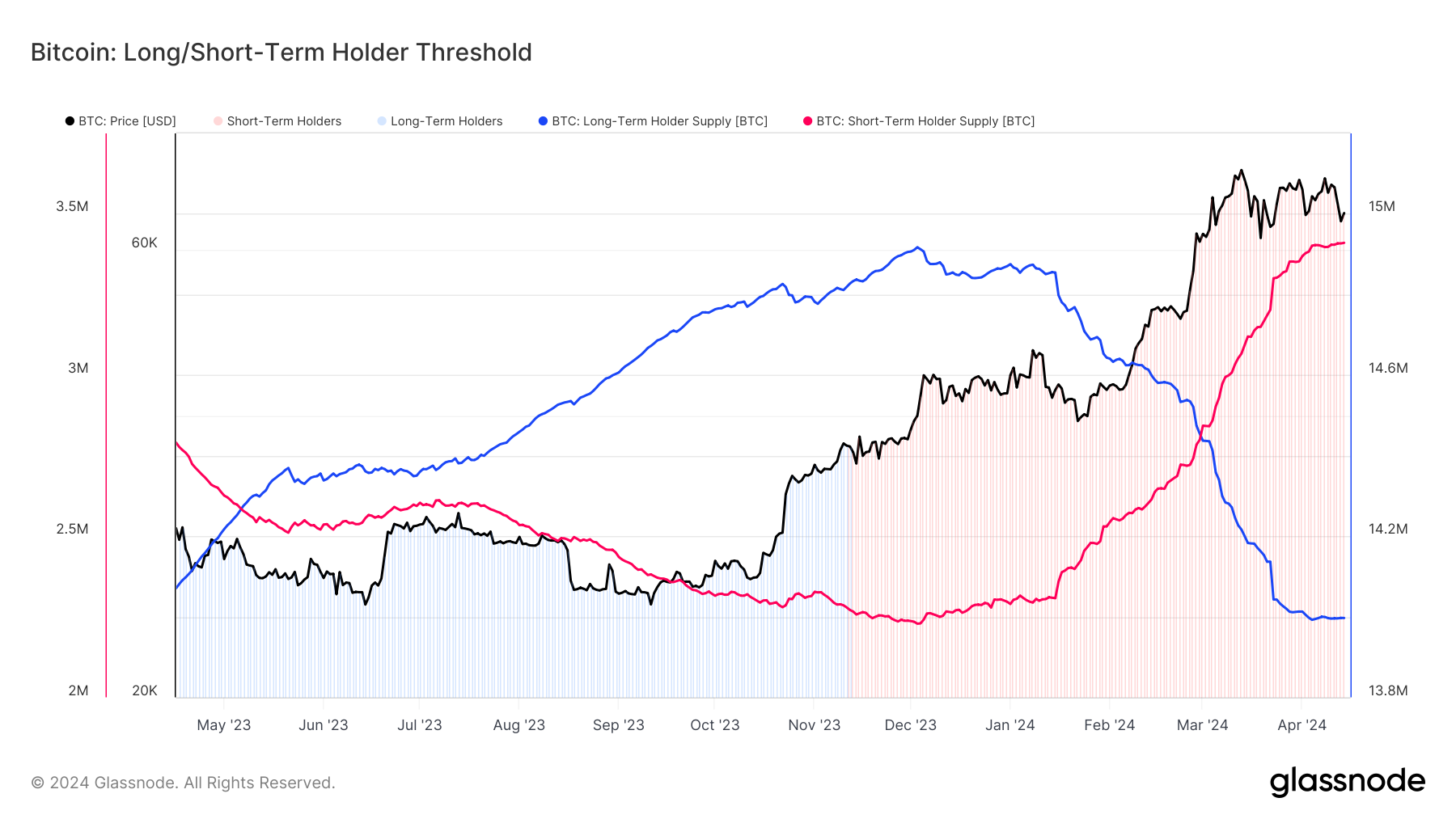
Glassnode data shows that since December, LTHs have offloaded around 1 million BTC; however, the recent GBTC sell-off has impacted Bitcoin’s long-term holder metrics. Excluding GBTC holdings, this accounts for roughly 700,000 Bitcoin sold by LTHs.
In contrast, short-term holders (STHs), those holding BTC for less than 155 days, persist in accumulating. During the period in which LTHs sold 1 million BTC, STHs have purchased approximately 1.2 million BTC, according to Glassnode data. While STHs have tapered their acquisition pace in the last 14 days, they remain active buyers. The interaction between LTHs and STHs indicates a promising outlook for short-term Bitcoin prices, with reduced sell pressure from LTHs.
As we can now discern from the data, because it takes 155 days to observe an LTH purchase, LTHs have capitalized on the opportunity amid the price surge from $25,000 in October 2023. Using a 14-day moving average, the LTH supply has experienced a slight increase, indicating accumulation. Currently, LTHs collectively hold approximately 14 million coins.
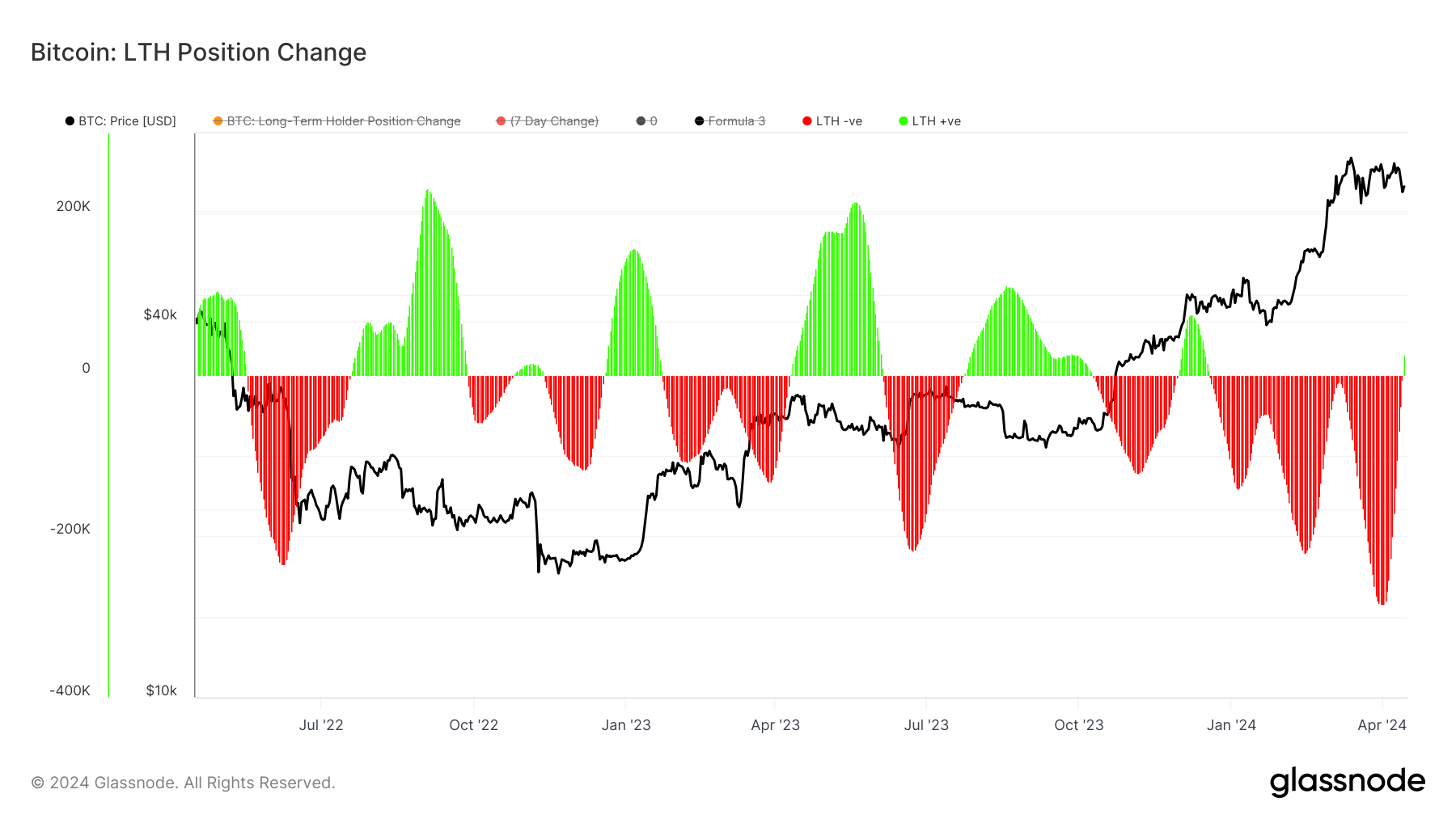
The post Bitcoin’s long-term holders shift to accumulation appeared first on CryptoSlate.
Bitcoin has found a rebound back above the $66,000 mark following a drop towards the on-chain cost basis of the short-term holder whales.
Bitcoin Drawdown Had Nearly Put Short-Term Whales Under Pressure
As pointed out by an analyst in a CryptoQuant Quicktake post, BTC’s price had neared the Realized Price of the short-term holder whales during the recent drop, but had still managed to remain above the level.
The “Realized Price” here refers to an on-chain indicator that, in short, keeps track of the cost basis (that is, the acquisition price) of the average investor in the Bitcoin market.
When the spot price of the cryptocurrency is trading above this level, it means that the investors as a whole are in a state of unrealized profits right now. On the other hand, it being under implies the overall market is carrying losses.
In the context of the current discussion, the Realized Price of the entire Bitcoin market isn’t of interest, but that of only a part of it: the short-term holder (STH) whales.
The STHs refer to the BTC investors who bought their coins within the past 155 days, while the whales are categorized as entities holding greater than 1,000 BTC. As such, the STH whales would refer to the large investors who bought during the last five months.
Naturally, the Realized Price of this group would indicate the average whale buying price over the past five months (and this price would obviously have to be one the cryptocurrency had traded at on some occasion inside this timeframe).
Now, here is a chart that shows the trend in the Bitcoin Realized Price for the STH whales over the last decade:

The value of the metric appears to have shot up in recent months | Source: CryptoQuant
From the graph, it’s visible that the Realized Price of the STH whales has rapidly climbed alongside the sharp rally Bitcoin has gone through this year. This makes sense, as the STHs represent the new hands coming into the market, who would have to buy at higher prices as the asset’s surge would continue.
Not only that, but the STHs who age past the 155 days mark (that is, those who bought at the relatively low prices) exit out of the cohort, thus raising the average even further.
The group that these matured investors advance to is known as the long-term holder (LTH) cohort. In the same chart, the quant has also attached the data for the Realized Price of the LTH whales as well.
It would appear that these veteran whales have their cost basis at just $21,500, meaning that these investors would be getting some big rewards for their patience. In contrast, the STH whales have their Realized Price at $60,700.
During Bitcoin’s recent drawdown, the asset had come close to retesting this mark. Such retests have historically lead to reactions in the market and during bull runs, this reaction has often appeared in the form of buying. This may be why the cryptocurrency found its rebound near the $60,700 level.
BTC Price
With its latest rebound, Bitcoin has so far managed to recover back towards the $66,500 level.
Looks like the price of the coin has made some recovery from its recent drop | Source: BTCUSD on TradingView
Featured image from Thomas Kelley on Unsplash.com, CryptoQuant.com, chart from TradingView.com
Disclaimer: The article is provided for educational purposes only. It does not represent the opinions of NewsBTC on whether to buy, sell or hold any investments and naturally investing carries risks. You are advised to conduct your own research before making any investment decisions. Use information provided on this website entirely at your own risk.
Quick Take
As the Bitcoin halving draws near, Bitcoin activity is witnessing a significant uptick in fees and hash rate.
Fees
On April 12, Bitcoin recorded its highest one-day fees in 2024, reaching an impressive $11 million. CryptoSlate reported on April 10 that this fee surge had gradually increased since early April.

Interestingly, Bitcoin and Ethereum fees are starting to converge, with a difference of just $190k on April 14. Ethereum fees on April 14 hit $5 million, the lowest amount since Feb. 5.
Hash Rate
Moreover, Bitcoin’s hash rate continues to trend higher, with a 4% increase in April, reaching an all-time high of 625 eh/s using a 14-day moving average. This continued growth in hash rate is partly due to the Bitcoin halving, which is just days away.
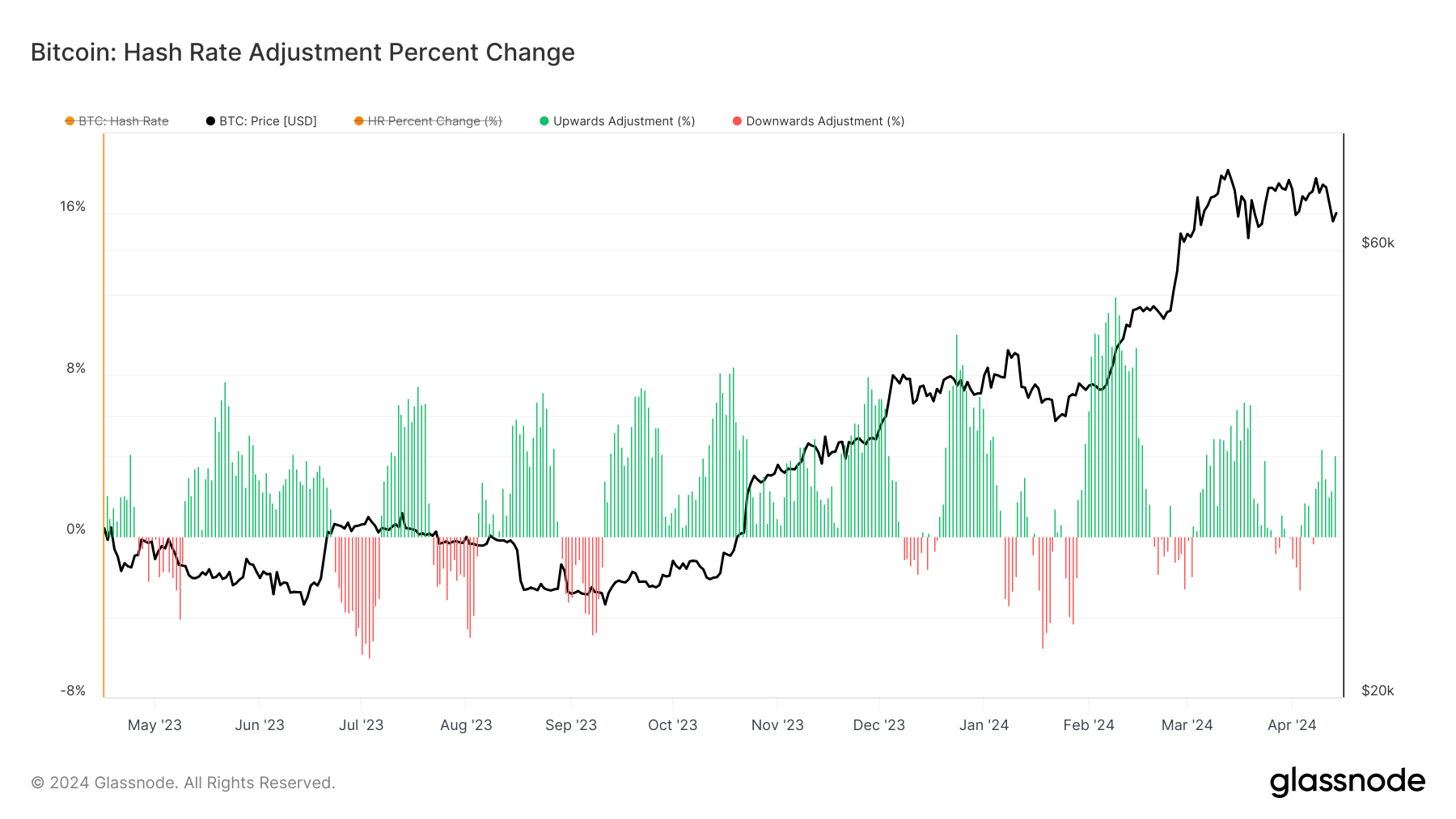
The post Bitcoin sees record fees in 2024 as halving approaches appeared first on CryptoSlate.
Bitcoin Technical Analysis: Indicators Suggest a Potential Shift in Market Momentum
 As of April 15, 2024, bitcoin presents a mixed landscape of consolidation and subtle recovery hints, reflecting a crucial moment for potential bullish or bearish trends. Bitcoin Despite the current market indecisiveness indicated by the 1-hour chart, the 4-hour and daily charts suggest underlying movements that could influence future price actions. The 1-hour chart displays […]
As of April 15, 2024, bitcoin presents a mixed landscape of consolidation and subtle recovery hints, reflecting a crucial moment for potential bullish or bearish trends. Bitcoin Despite the current market indecisiveness indicated by the 1-hour chart, the 4-hour and daily charts suggest underlying movements that could influence future price actions. The 1-hour chart displays […]
Source link
Quick Take
The digital asset ecosystem experienced a shaky weekend, with Bitcoin plummeting to around $65,000 from its $70,000 trading price on Friday, April 12. The downward trend continued into the weekend, with Bitcoin further declining to $60,800 amidst geopolitical tensions in the Middle East on Saturday evening. However, following a reduction in tension and the approval of Hong Kong ETFs Bitcoin has recovered back above $66,000.

According to Coinglass, April 12 witnessed approximately $880 million in liquidations, with long liquidations accounting for roughly $780 million. The following day, April 13, saw even more liquidations at roughly $950 million, with long liquidations comprising around $770 million. These two events marked one of the most significant long liquidation incidents since October, second only to March 5, which saw liquidations exceed $850 million.

The post Bitcoin back above $66k after weekend of panic selling appeared first on CryptoSlate.
Solana tumbled and declined toward $110. SOL price is now correcting losses above $140 and facing hurdles near the $160 resistance zone.
- SOL price gained bearish momentum and declined below $150 against the US Dollar.
- The price is now trading below $160 and the 100 simple moving average (4 hours).
- There is a key bearish trend line forming with resistance at $160 on the 4-hour chart of the SOL/USD pair (data source from Kraken).
- The pair could continue to recover if it clears the $150 and $160 resistance levels.
Solana Price Starts Recovery
Solana price started a major decline below the $180 and $160 support levels. SOL declined over 20% and even tumbled below the $150 level. Finally, the bulls appeared near $110.
A low was formed at $115.04 and the price is now attempting a recovery wave like Bitcoin and Ethereum. There was a decent increase above the $125 and $132 levels. The price cleared the 23.6% Fib retracement level of the downward move from the $204 swing high to the $115 low.
Solana is now trading below $150 and the 100 simple moving average (4 hours). Immediate resistance is near the $150 level. The next major resistance is near the $160 level.
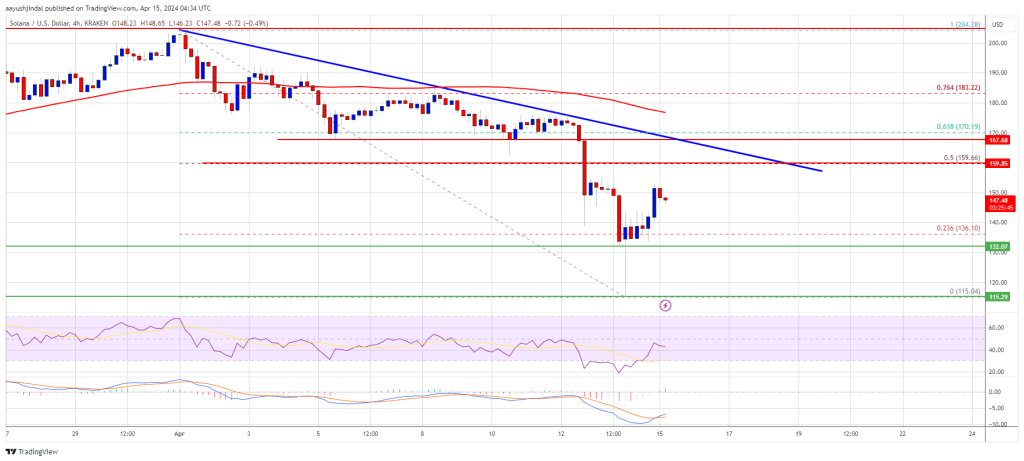
Source: SOLUSD on TradingView.com
There is also a key bearish trend line forming with resistance at $160 on the 4-hour chart of the SOL/USD pair. The trend line is near the 61.8% Fib retracement level of the downward move from the $204 swing high to the $115 low. A successful close above the $160 resistance could set the pace for another major increase. The next key resistance is near $182. Any more gains might send the price toward the $200 level.
Are Dips Supported in SOL?
If SOL fails to rally above the $160 resistance, it could start another decline. Initial support on the downside is near the $140 level.
The first major support is near the $132 level, below which the price could test $125. If there is a close below the $125 support, the price could decline toward the $115 support in the near term.
Technical Indicators
4-Hours MACD – The MACD for SOL/USD is gaining pace in the bullish zone.
4-Hours RSI (Relative Strength Index) – The RSI for SOL/USD is below the 50 level.
Major Support Levels – $140, and $132.
Major Resistance Levels – $150, $160, and $182.
Disclaimer: The article is provided for educational purposes only. It does not represent the opinions of NewsBTC on whether to buy, sell or hold any investments and naturally investing carries risks. You are advised to conduct your own research before making any investment decisions. Use information provided on this website entirely at your own risk.
 JPMorgan has warned of a downside risk in crypto markets, citing subdued crypto venture capital flows. The global investment bank’s analysts also remain cautious about the U.S. Securities and Exchange Commission (SEC) greenlighting spot ethereum exchange-traded funds (ETFs) in May. Crypto Market’s Downside Risk Warning Global investment banking giant JPMorgan published a report on Thursday, […]
JPMorgan has warned of a downside risk in crypto markets, citing subdued crypto venture capital flows. The global investment bank’s analysts also remain cautious about the U.S. Securities and Exchange Commission (SEC) greenlighting spot ethereum exchange-traded funds (ETFs) in May. Crypto Market’s Downside Risk Warning Global investment banking giant JPMorgan published a report on Thursday, […]
Source link


